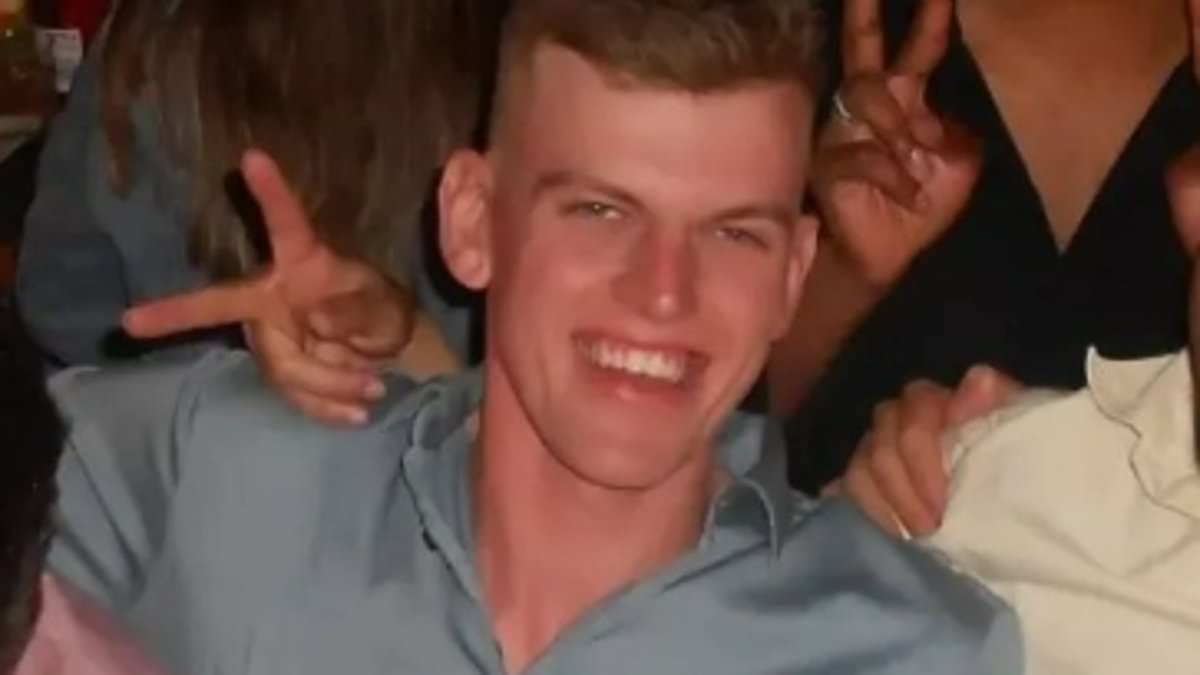The helicopter pilot who crashed a stolen aircraft into a waterfront hotel had been ‘put to bed’ after a night of drinking before he took off on his fatal flight.
Blake Wilson, 23, was behind the controls of a R44 Robinson helicopter when it crashed into the roof of DoubleTree by Hilton in Cairns at about 1.50am on Monday.
The helicopter was seen flying for at least five minutes in the city’s CBD before it slammed into the hotel roof, smashing windows of nearby rooms.
Two guests, a man in his 80s and a woman in her 70s, were taken to hospital for smoke inhalation.
Nautilus Aviation, which employed the pilot in a ground crew position, said he had gained unauthorised access to a helicopter in their hangar after attending an unofficial farewell event.
Daily Mail understands that Mr Wilson had been ‘intoxicated’ at the celebratory dinner and had to be put to bed.
Mr Wilson, who is originally from Palmerston North on New Zealand’s North Island, gained his private pilot licence from Christchurch Helicopters in April 2022, which employs NZ’s most famous All Blacks rugby player, Richie McCaw, among its pilots and instructors.
In a statement, Christchurch Helicopters said Mr Wilson had a New Zealand pilot’s licence but had never flown in and was not authorised to use a Nautilus Aviation helicopter.
‘Blake completed his Diploma in Aviation with Christchurch Helicopters in 2022,’ the statement said.
‘He was well-liked by the staff and his fellow classmates.
‘He will be missed by the team at Christchurch Helicopters and our thoughts are with his family and friends at this time.’
Wilson’s Instagram page shows him standing proudly by a helicopter at Christchurch Helicopter’s headquarters in September 2022 and declaring he was ‘officially a Commercial Helicopter Pilot’.
He moved to Cairns with his girlfriend in March this year and interviewed with several different helicopter charter companies before he landed the job at Nautilus Aviation, which operates from seven bases across Northern .
In April, he posted a photo of Cairns’ Esplanade, with the DoubleTree Hilton hotel he crashed into this week prominently featuring in the middle of the image.
Alongside the photo, he wrote: ‘The new home in Far North Queensland. Excited to see what this adventure brings #itsbloodyhothere’.
A week later, he posted a photo of himself out with six friends at the nearby Cairns bar, Gilligans.
He spent more than four months working at the company’s Cairns base, before he received a promotion to work as a refueller for Nautilus on Horn Island, above ‘s Top End, which he was due to start on Monday.
Colleagues at the company held a farewell dinner and drinks for Mr Wilson on the Sunday night, just hours before he embarked on his fatal flight.
One witness told media that Mr Wilson had been ‘intoxicated’ at the celebratory dinner and had to be put to bed.
It’s understood that at some point later in the night, he left his room and got behind the wheel of a Nautilus vehicle which he then drove to the company’s headquarters at Cairns airport.
Now questions have been raised about security at the airport, and how he was able to gain access to the chopper so late at night.
‘The security arrangement at that airport is the same as at most, if not all, general aviation airports in . So a review is probably very worthwhile, in my opinion,’ aviation expert Peter Carter said.
‘It’s an inside job, so it’s very hard to create security arrangements to prevent that sort of thing occurring.
‘The company might consider different levels of access depending on the seniority of the employee … it should come to its own conclusion as to the arrangements it makes for security, in my opinion.’
Cairns Airport said an initial review indicated site access had not been compromised.
‘Our thoughts are with all affected by the distressing incident at Cairns Esplanade,’ CEO Richard Barker said in a statement.
‘Cairns Airport operates under a federally approved, multi-layered transport security program.
‘To reassure our community, we wish to confirm a review has been conducted, showing no compromise of our airport fence or access points.’
